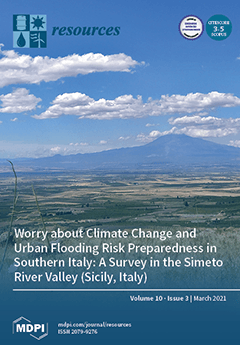Geo-thermalism has been widely recognized on the Baja California Peninsula, especially during the last decade. The current research, carried out on Bahia Concepcion, evidences the existence of geothermal springs, which get recharged mainly by groundwater and seawater. The groundwater can be characterized as
[...] Read more.
Geo-thermalism has been widely recognized on the Baja California Peninsula, especially during the last decade. The current research, carried out on Bahia Concepcion, evidences the existence of geothermal springs, which get recharged mainly by groundwater and seawater. The groundwater can be characterized as Na
+-Cl
− and Na
+-HCO
3− type, with a pH value close to neutrality. The slightly more acidic thermal sites presented temperatures between 32 °C and 59 °C at the surface. Based on the relationships of the Cl
− and Br
−, as well as the B/Cl
−, and Br
−/Cl
− ratios, seawater was recognized as the main source of salinity. The spatial distribution is explained directly through marine intrusion, or via sprays and aerosols within the rainwater. Seawater ratios in thermal springs varied from 62% to 83%, corresponding mainly to shallow inflow, but seawater inputs into the deep thermal reservoir were also recognized. Temperatures in the geothermal deep reservoir were inferred from 114 to 209 °C, calculated through the SiO
2 and Na
+-K
+ geothermometers. In addition to previously reported thermal sites at Bahía Concepción, and based on their elevated temperatures, two new sites were identified. Another five springs do not fulfill the commonly used definition, based on differential temperature, but show the typical hydrogeochemical signature of thermal water. A new approach to identify this low-temperature geothermal-influenced spring water by its hydrogeochemical composition is presented, for which the term “Masked Geothermal Waters” (MGW) is introduced. Our findings increase the area of the geothermal anomaly and, therefore, the potential of geothermal resources. The approach proposed in this research will also be useful to identify more MGW in other coastal areas.
Full article





